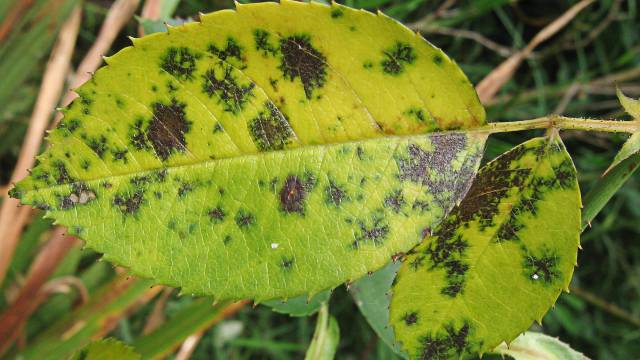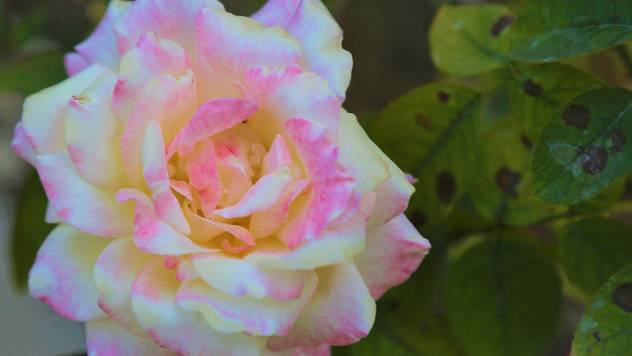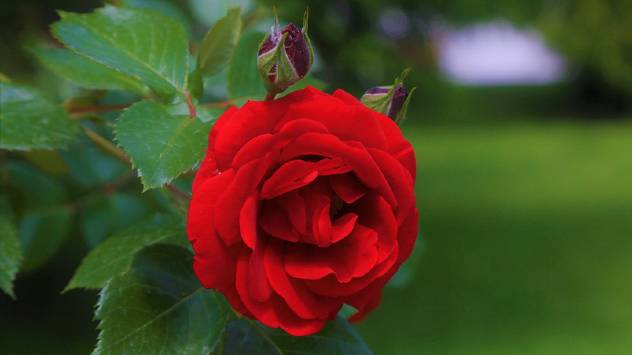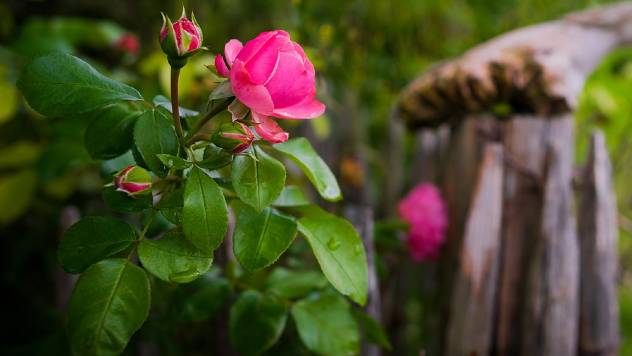Black spots or black spots on rose leaves are actually black spot, a disease caused by fungi. These black spots lead to drying and falling of the leaves. In addition to looking ugly, it can weaken the plant a lot, so prevention and protection of roses is a key step to preserve your favorite flowers.

What does black spotting do to roses?
Black spots usually appear on the upper side of the leaves, although they can also appear on the underside. They begin to develop from the edges of the leaf and move upwards. They can appear early, when the leaves are forming, and then the spots expand and coalesce. Affected the leaves fall off from the rose, and if it is not acted on in time, the whole plant can become defoliated, i.e. remain completely without leaves. In addition to leaves, fungi it can infect young branches and even flowers.
Infected roses bloom fewer flower budsI can remain completely without leaves and become susceptible to other diseases that cause greater problems.
How to prevent the appearance of black spots on roses?
Spraying plants with commercial chemicals is always an available solution, but should be a last resort. If you pay attention to the plant i systemic you can help her longer term to protect it.


Adequate growing conditions
The most important thing is to provide your roses with ideal growing conditions, because only a healthy plant can fight various temptations. Roses prefer a sunny location with with well-drained soil and regular, weekly watering.
Combined planting: Roses grow best next to these plants
Good air flow
Ensure good air circulation around and through the rose stems. Do not plant your roses too close to other plants. If the rose has become too dense and the air does not circulate properly, it is necessary to prune it to open the space between the branches and allow air to reach all parts of the plant.


Proper watering
Trudite se da do not water the leaves. You cannot influence the rain, but when watering you can control that the leaves do not get wet.
Control of land around roses
Mandatory remove all fallen leaves from the soil around the roses. Fungus is a very resourceful organism that has perfected its survival techniques for centuries. Namely, existing fungal spores can remain on the ground. When it rains, the spores can easily reach the plant through the splashing water droplets. In addition, the fungus is carried by the wind, and it can overwinter on the remaining leaves and branches and wait for favorable conditions for further development.
Pruning a rose
First, remove all infected leaves, collect and burn them. When doing regular pruning, in late fall or early spring, remove all remaining leaves as spores can overwinter on them and even though it doesn’t look infected, it most likely will be.
Within 10 days of the appearance of the first symptoms, the disease is already spreading because the spores can be transmitted both by water and by wind. Inspect the branches. Wherever signs of infection are noticed, and cut the branches 6-8 cm below the infected place. This pruning must be done in dry weather. Never with which you necessarily cut the infected roses disinfect with 10% hydrogen or alcohol, otherwise you can re-transmit the disease to roses or other plants.
TIPS: How to grow roses on the balcony and in the room
Mulch
Place mulch around your roses. He will prevent or at least reduce splashing of water droplets when it rains heavily.


Preparations for treatment and prevention
Exist commercial and domestic DIY solutions which you can use to cure the black spot on the lipstick. This fungus is a rather annoying problem and treatment can take time, so arm yourself with patience. If black spots reappear after the first treatment, you will probably need to spray it every week, starting in early spring.
For all those who grow roses: Here’s how to protect them from diseases and pests
Bicarbonate of soda: Dissolve one tablespoon of baking soda in 1 liter of warm water and add 1 teaspoon of liquid soap. This mixture works better as a preventative than as a cure.
Bordeaux mixture: This is a fungicide containing copper sulfate and hydrated lime. It can be used as a powder or mixed with water and sprayed. It also repels some insect pests, but can burn the leaves of the plant. It is usually used as a preventive measure in the spring before the leafing of the plant begins.
Sulfur: He prevents and relieves from fungal diseases. It is also used to control several harmful insects. Sulfur can be purchased as a finely ground powder.
Source: TheSpruce
Source: www.agromedia.rs


